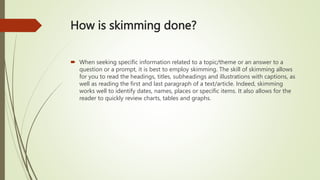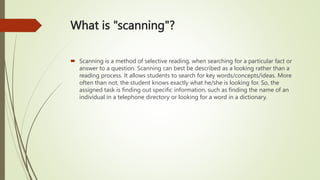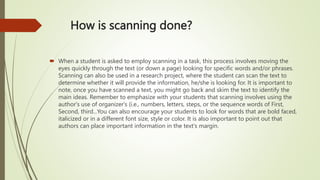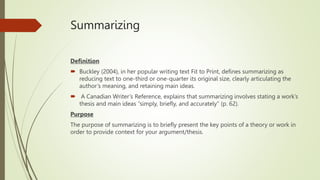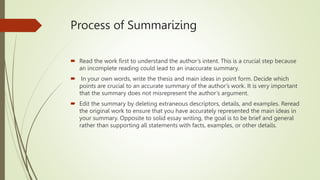This document discusses strategies for skimming, scanning, and summarizing texts. It defines skimming as quickly reading titles, headings, and first/last paragraphs to get the main ideas. Scanning is selectively reading to find a specific fact or answer. When summarizing, the key is to state the main points and thesis in your own words in a condensed form, accurately representing the author's intent and argument. Skimming and scanning help identify useful information efficiently, while summarizing is useful for supporting arguments and providing context.


